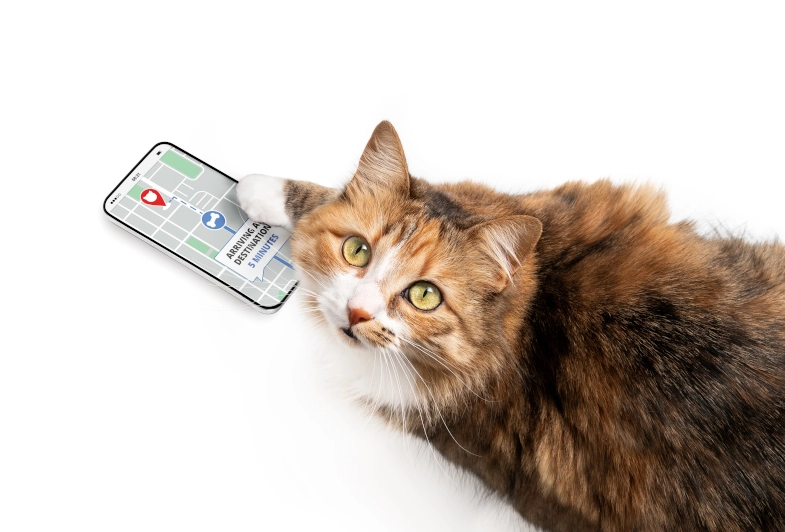Apple Airtags are safe for pets when used properly. While veterinarians raise some concerns about these devices, the risks of putting your pet in danger are small if you take some precautions, such as securely attaching the AirTag to your pet’s collar, checking for damage on the device, and regularly replacing batteries. In our view, AirTags are no more dangerous than an identification tag or accessories usually included with collars. However, veterinarians often warn against trackers like Apple’s AirTag. Their main concerns are:
- Risk of Accidental Ingestion. Vets are concerned about the possibility of pets accidentally swallowing AirTags. If your dog is curious and likes to chew on things, keep an eye on the attachment, ensuring it’s secure and in good condition to prevent getting loose or being detached by your dog.
- Battery leaks. If your dog chewed and ingested an AirTag, the battery could be damaged and leak causing organ damage. Another scenario is an old battery leaking, which can cause chemical burns on your pet’s skin or an allergic reaction.
- Negative Behavioral Effects. Some vets worry that an AirTag on a pet’s collar may cause discomfort or anxiety, leading to behavioural changes. Monitor your pet’s behaviour closely when introducing any new device or equipment.
Are Apple Airtags good for tracking pets?
AirTags are effective only in populated areas. AirTags use a network of Apple devices to send location updates to your phone, making it easier to track your pet and coordinate with others if they stray too far. However, this approach requires other Apple devices nearby. So, Airtags won’t help if you lose your dog during a mountain hike or live far away from others in the countryside.
Alternative devices to track your pet
While there are many devices to track keys, luggage and other objects, the only real alternative to the Apple AirTag is the Samsung SmartTag. It uses a similar principle to Apple’s device but relies on the Samsung Galaxy network. This is a good alternative for people living in countries where Apple devices don’t have a big market share.
Other tracking devices, such as Tile, are not very useful for tracking your pet if they stray far from your house. Either they have limited reach or require other users nearby to have software installed on their mobile.
If you don’t live in a populated area or go on hikes and outdoor activities with your pet, a GPS tracking system such as Tractive is best. These systems don’t really in the phone network, but at the same time, they are a bit bulkier than tags.
Another way of keeping an eye on your pet is microchipping. Microchipping involves implanting a small chip, about the size of a grain of rice, under your pet’s skin, typically between the shoulder blades. Each microchip contains a unique identification number that can be scanned using a reader. However, if your pet gets lost, you won’t be able to track your pet in real-time and finding your pet will depend on someone taking your pet to a vet to scan the microchip.
We recommend using a combination of these devices. A smart tag in your pet’s collar and microchipping will help you find your pet in most scenarios.
Recent Posts
This post looks at the benefits of using pet-sitting websites and apps and provides you with some tips on how to find the right sitter for your furry friend.
Nothing says "dream holiday" than travelling with someone you love the most – your dog. You can make travelling with your dog a memorable experience or a miserable one, depending on how much you...

